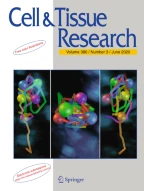Abstract.
Knowledge of the formation of the normal male urethra may elucidate the etiology of hypospadias. We describe urethral formation in the mouse, show the similarities and relevance to human urethral development, and introduce the concept of the epithelial seam formation and remodeling during urethral formation. Three mechanisms may account for epithelial seam formation: (1) epithelial-mesenchymal transformation similar to that described in the fusion of the palatal shelves, (2) apoptosis, and/or (3) tissue remodeling via cellular migration. Urethral development in the embryonic mouse (14–21 days of gestation) was compared with urethral formation in embryonic human specimens (8–16 weeks of gestation) by using histology, immunohistochemistry, and three-dimensional reconstruction. The urethra forms by fusion of the epithelial edges of the urethral folds, giving a midline epithelial seam. The epithelial seam is remodeled via cellular migration into a centrally located urethra and ventrally displaced remnant of epithelial cells. The epithelial seam is remodeled by narrowing approximately at its midpoint, with subsequent epithelial migration into the urethra or penile skin. The epithelial cells are replaced by mesenchymal cells. This remodeling seam displays a narrow band (approximately 30 µm wide) of apoptotic activity corresponding to the mesenchymal cells and not to epithelial cells. No evidence was seen of the co-expression of cytokeratin and mesenchymal markers (actin or vimentin). Urethral seam formation occurs in both the mouse and the human. Our data in the mouse support the hypothesis that seam transformation occurs via cellular migration and not by epithelial mesenchymal transformation or epithelial apoptosis. We postulate that disruption of epithelial fusion, remodeling, and cellular migration leads to hypospadias.
Similar content being viewed by others
Author information
Authors and Affiliations
Additional information
Electronic Publication
Rights and permissions
About this article
Cite this article
Baskin, L.S., Erol, A., Jegatheesan, P. et al. Urethral seam formation and hypospadias. Cell Tissue Res 305, 379–387 (2001). https://doi.org/10.1007/s004410000345
Received:
Accepted:
Issue Date:
DOI: https://doi.org/10.1007/s004410000345
